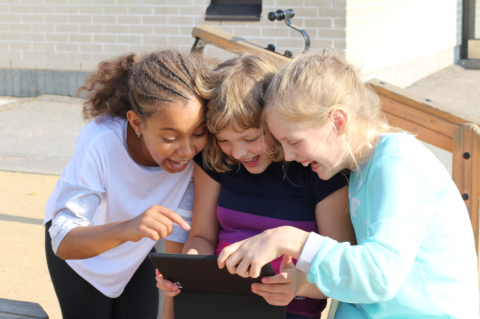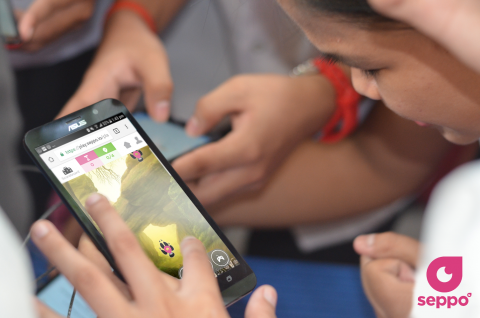Can we play some more?
This is a question our users often get asked by their students after a Seppo lesson. When teachers choose to use games in teaching, in the best case, it’s a game changer also for their students learning. Students’ instant engagement and eagerness to play are just some of the benefits games can bring to teaching and learning.
Games have an ability to both motivate players and broaden their interests. Players research, explore, create and complete quests during a game. It becomes much easier to build meanings and connections between theory and praxis when you are an active doer instead of a passive listener.
 Seppo platform uses game mechanics to add engagement to any lesson. Game mechanics like points, story, time limit, movement and feedback help bring progress visible and make a lesson feel more informal. Especially added physical activity also helps students concentrate and learn better. But mere game mechanics and tools, no matter how great they are, won’t change the lives of students. Good teachers do.
Seppo platform uses game mechanics to add engagement to any lesson. Game mechanics like points, story, time limit, movement and feedback help bring progress visible and make a lesson feel more informal. Especially added physical activity also helps students concentrate and learn better. But mere game mechanics and tools, no matter how great they are, won’t change the lives of students. Good teachers do.
Teachers have a crucially important role in making game experiences meaningful. But teachers also get better tools to guide and reward students when they use games for teaching. Games provide immediate feedback to players. In a game, you can easily notice and reward students for the progress they are making every step on the way. In learning games, you have a chance to give meaningful feedback to your learners in every game question. Positive and constructive feedback guides learners forward and helps build their feeling of competency.
 Another way to help your learners feel competency is to really empower them to own their learning. In games, this is done by creating possibilities for choices. Learners make their own decisions along the way in order to reach set goals. In Seppo games players can usually choose what, when, and how they answer your questions, sometimes even if they answer at all. Games provide a safe environment to fail and try again, so it’s also possible to improve one’s game along the way. Top this with your feedback, and you are doing wonders to your learners self efficacy.
Another way to help your learners feel competency is to really empower them to own their learning. In games, this is done by creating possibilities for choices. Learners make their own decisions along the way in order to reach set goals. In Seppo games players can usually choose what, when, and how they answer your questions, sometimes even if they answer at all. Games provide a safe environment to fail and try again, so it’s also possible to improve one’s game along the way. Top this with your feedback, and you are doing wonders to your learners self efficacy.
One of the greatest things about games is that playing together is a lot of fun. Players learn to collaborate and solve problems together, but you can also see completely new sides and skills in your learners when they play. It’s easy to see the connection between this kind of fun and motivation.
So yes, we can play some more. Are you ready to start?
Mira Kekarainen
Head of Business Development
Seppo.io
Information about Seppo
Seppo is an online gamification platform, which is based on world famous Finnish education. Seppo combines gamification, social learning, digital storytelling and physical movement. With Seppo, any lesson is easily turned into an interactive game, where the students can explore and research the subject in real environments, use their creativity and learn 21st century skills.
 How seppo works
How seppo works
In Seppo games, the teacher is in charge of the content. He/She creates the game by creating exercises based on the lesson plan or selects a game or exercises from the vast content library. Students login to the game on their mobile devices (one tablet or smartphone per team). Students can answer exercises by using video, audio, text and photo answers. The teacher monitors the game giving students personalized feedback and points. All answers and creations are saved in a digital archive, where best ideas or reflection requiring exercises can be reviewed together with the class after the game.
Seppo games can be played indoors or outdoors. Outdoor games can be played on a live GPS map where exercises will only open at a certain location. The exercises can be linked to the authentic environment students are in: exploring nature in a park or art in a museum, bringing tangible things in abstract concepts, or learning business operations in real companies. Games are also a great way to add light physical exercise to lessons instead of having students sit down in lecture halls all day.
